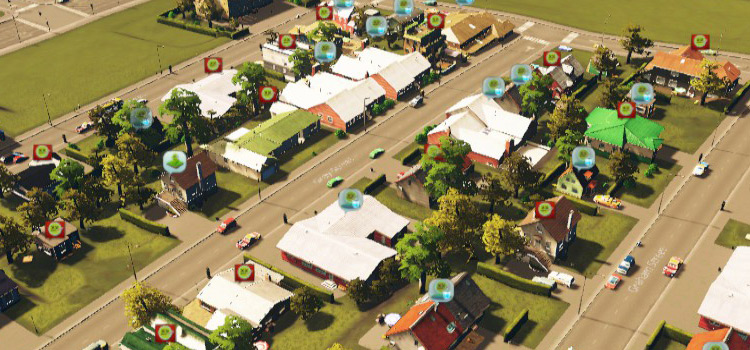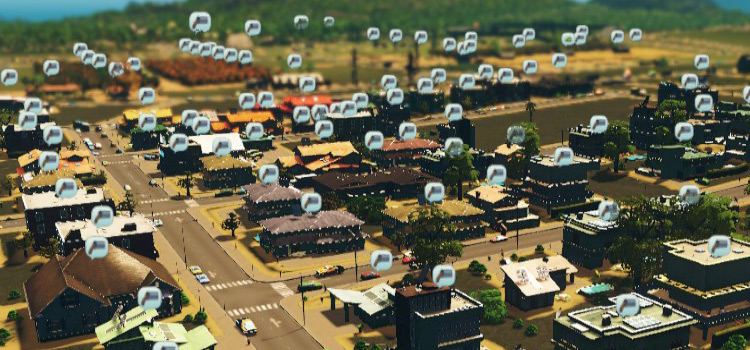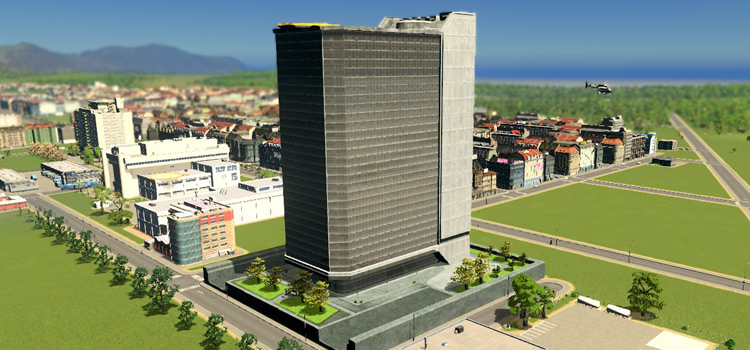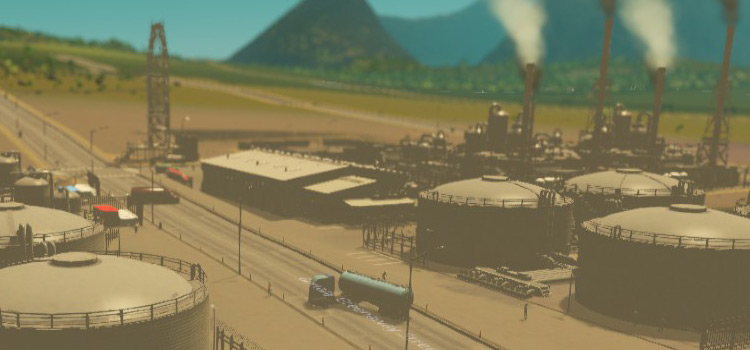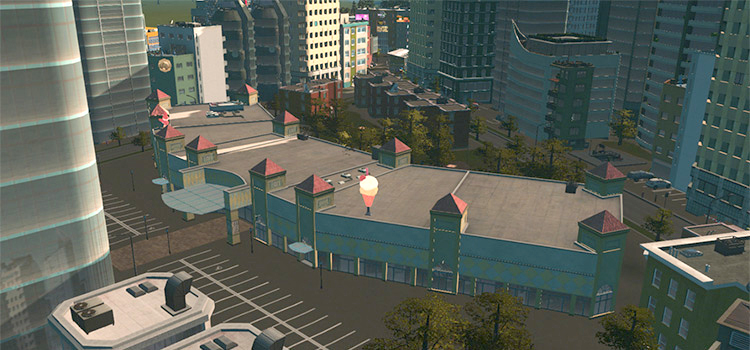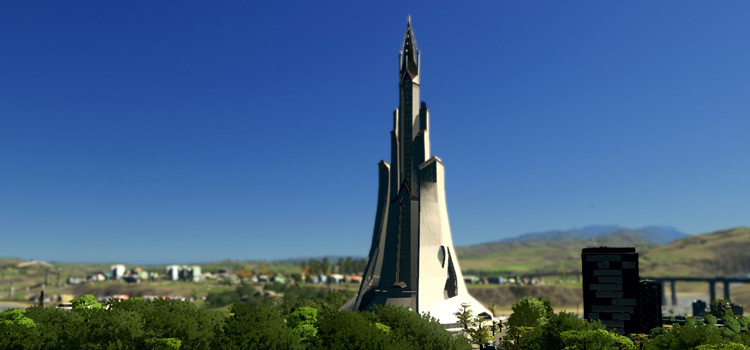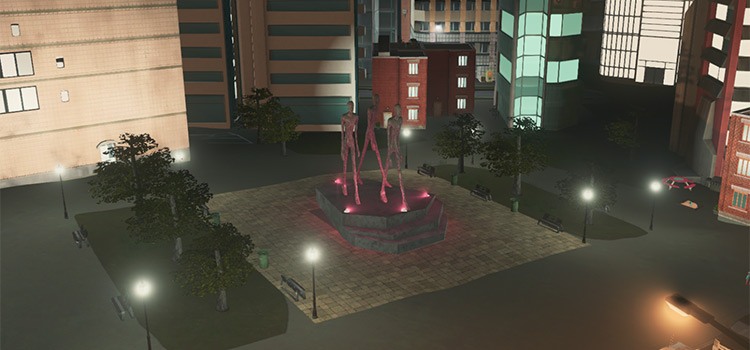
The best way to fix water pollution is by making sure your sewage plants and water pumps are placed far away from each other.
But whether you want to plan your city before building it, or if you currently have a water pollution problem, these various methods can help you minimize pollution risk.
- Plan your city ahead of time for strategic placement of sewage outputs (Most Efficient)
- Use the edges of the map to limit water pollution (Easiest Method)
- Check the flow of the water to avoid further pollution
- If water is limited, dump sewage on land
- Let nature remove pollution on its own
- Green Cities DLC – Use eco sewage treatment plants and floating garbage collectors
Method #1: Planning your City Ahead of Time (Best Method)
The best way to keep water pollution away from your city is to plan before you build. Decide where you want your city and your clean water, then plan where the sewage will be pumped to. Keep the water pumps and sewage plants separate when at all possible.

As shown in the image above, the sewage and water pumps are separated from each other.
This may not reduce pollution from the sewage itself, but it keeps the fresh water supply to your city completely free of pollution.
Method #2: Watch out for Water Currents
When placing buildings that have to do with water, the flow of the water is shown with arrows.
It’s important to make sure that the flow of the water will not carry polluted water into a clean water pump. However, these currents can be beneficial if used correctly, as shown below.
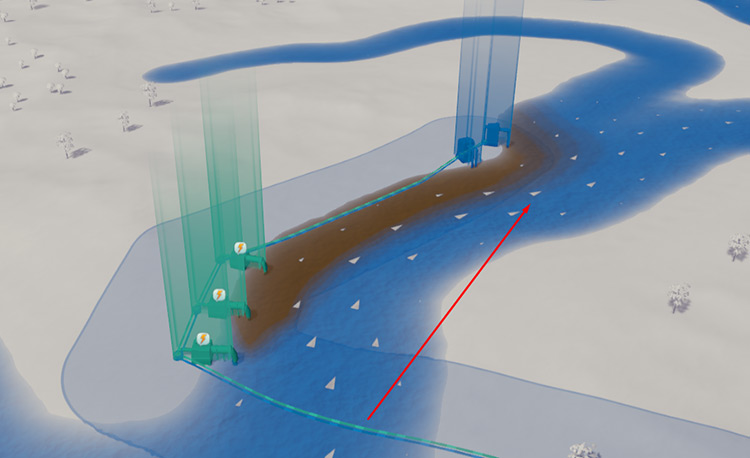
Note: Even if a sewage plant is downstream of a water pump, the force of the water pump can reverse the natural flow of the water. Be careful and make sure they are far enough away from each other.
When sewage pumps are placed at the edge of the map and the water is flowing in the right direction, the sewage is instantly swept out of the area, leaving you worry-free about the spread of water pollution.
If your map has an outflow off the map like shown in the picture below, this method is the easiest way to keep water pollution to a minimum.

Method #3: Dump Sewage on Land
If your map’s water supply is naturally low, dumping sewage on land can be an option for waste disposal.
This will keep your water free of pollution, but keep in mind that ground pollution will still occur. Try placing land-based sewage outputs in already polluted areas. (ex. By a landfill, industry area, etc.)
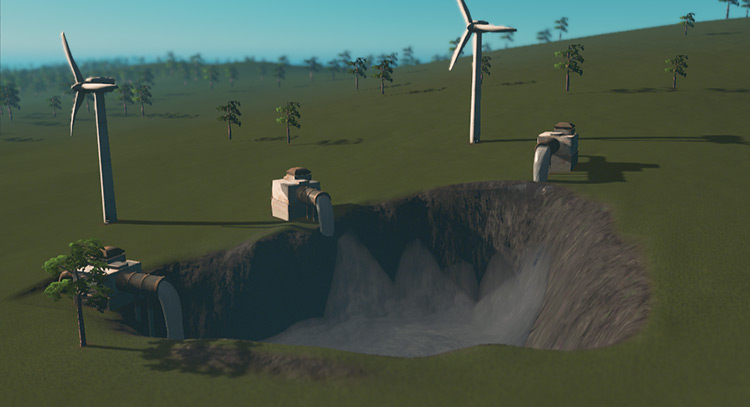
Keep in mind that sewage is like water – it will flow downhill and may create its own pool of sewage. To combat this, use landscaping tools to create a hole in the ground or slope the ground to flow the sewage off the map.
Note: Keep an eye on land-based sewage areas; if your hole is not deep enough or has filled up, the sewage can overflow and cause even more problems.
Method #4: Let Nature Takes its Course
If the other methods have not worked for you, then another solution is to relocate the sewage plants to another location and let nature remove the pollution on its own.
Over time, ground/water pollution caused by sewage will fix itself and the pollution will be removed.
Note: this process takes quite some time, so to use the method properly you should only use it in dire circumstances. When you relocate, try to use the previous methods in this article when planning where to put your sewage plants.
Method #5: Use Specialized Buildings from the Green Cities DLC
In order to use this method, you will have to have purchased the Green Cities DLC to access the special buildings required. The buildings that are included in this DLC for sewage management are listed below.
- The Eco Water Outlet
- The Eco Water Treatment Plant
- The Floating Garbage Collector
This table will lay-out the differences between the DLC structures and their vanilla counterparts.
| DLC Building | Difference vs Vanilla Buildings |
|---|---|
| Eco Water Outlet |
|
| Eco Water Treatment Plant |
|
Floating Garbage Collectors can be placed on water to clean it. If there is already a polluted area of water, place these structures down to slowly remove the pollution.
So What’s The Best Fix?
The absolute single best way to keep water pollution out of your water supply is to plan your city to keep sewage plants and water pumps away from each other. Using this method, your water supply should remain uncontaminated throughout your entire game.
If you already have a pollution problem, your best option then would be to move the sewage plants to more strategic locations as discussed above, and use Floating Garbage collectors to aid the natural pollution clean-up.
-
Cities: Skylines
- How To Fix Water Pollution in Cities: Skylines


